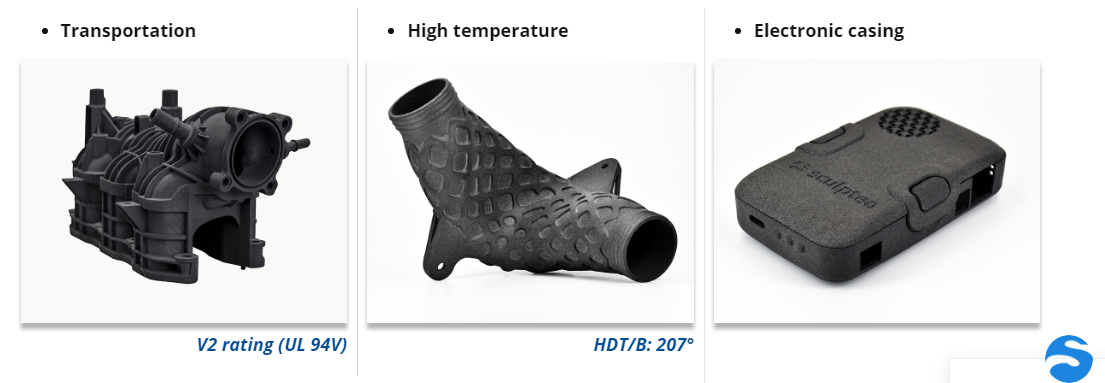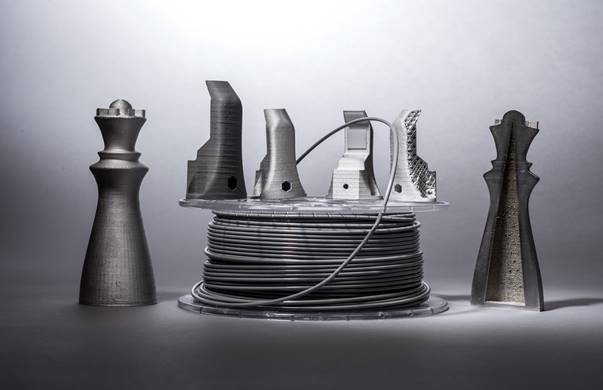With a market cap of $52B, German chemical giant BASF is near the top of the food chain within the 3D printing industry. It sits just below GE, with its near $60B market cap, and far ahead of HP, which is closer to $25B. This means that when it makes moves in the additive space, what may appear to be small ripples can generate extremely big waves. This may be particularly true for the acquisition of Sculpteo, one of the most prominent 3D printing service bureaus alongside Materialise, Shapeways and those operated by systems manufacturers, such as Stratasys Direct Manufacturing and 3D Systems On-Demand.
Now that the purchase is completed, as of December 2019, we spoke to Sculpteo CEO Clément Moreau about what it means for the business. Founded in 2009, Sculpteo was able to quickly distinguish itself from other service bureaus by running its entire business on the cloud. With an initial focus on individual users, the firm developer numerous software tools capable of increasing the ease-of-use and quality control for 3D printing parts.
Moreau explained that, like many of the other companies springing up at that time, there was a strong belief that the technology would achieve widespread popularity among consumers, but that, as the industry shifted, Sculpteo remained agile and changed course, too.
“When we started the company in 2009, we really had the idea that anyone could 3D print and easily become a manufacturer,” Moreau said. “We tried that and it did not happen—it hasn’t happened so far. We had to change. In 2012, we saw that, in our numbers, enterprise, startups, small-to-medium businesses were bigger than consumers and we decided to follow this channel. But since about 2013-2014, we really refocused on industrial application. It really started with small-to-medium businesses and progressively obtaining more and more bigger customers. Today, we have very large customers in different domains, like luxury goods.”
Moreau continues to manage the company as he always has, except now that he has the backing of a large specialty chemical company, the service bureau will have significant fuel for growth.
“It’s quite exciting to be part of this giant company. It’s another different to what we knew before. It’s very interesting to have the capacity to do research and development and be on the cutting edge. We always tried to take risks and innovate,” explained Moreau. “We have been able to achieve our own powder R&D, but now we have the capacity to interact with the people who actually do powder develop and research. Anything we want we can now think about. It doesn’t mean we will necessary pursue it, but the possibility is there.”
Just recently, Sculpteo released its first range of material options made available through BASF. They include flame retardant polyamide 6 (PA6), polypropylene and thermoplastic polyurethane (TPU), all under the Ultrasint brand, as well as Ultrafuse 316L metal filament. The company has since been able to double the floor space of its facility in France, from 800m2 to 1,600m2, adding €2 million in additive manufacturing equipment.
The Ultrafuse 316L filament has been one that has gotten a lot of attention in the industry, as a metal filament that can be printed on nearly any desktop machine. Now, via Sculpteo, any user can have objects 3D printed in Ultrafuse 316L by Sculpteo, who will also debind and sinter the printed parts in “giant hydrogen furnaces,” Moreau says. The process is longer than other 3D printing services offered due to the time it takes to perform these subsequent processing steps, but the seven-day turnaround time may still be faster than other methods of manufacturing.
The primary benefit however is that it is much less expensive than other metal 3D printing processes. Companies running 3D print farms can use the material on just about any fused filament fabrication system beyond the lowest-cost machines.
With BASF resources, Sculpteo can now work hand-in-hand with clients, who may have a certain application in mind, and explore the necessary materials that best fit their needs. Moreover, the company is able to go much further beyond prototyping and perform more manufacturing.
“Being part of this big group means we focus more on production than rapid prototyping, which, of course, is the trend in the industry today. More than 50 percent of orders we get are for production and that’s where we continue to grow,” Moreau said.
He pointed out that, in the past, serving a customer may have been about a client coming in, finding the right material and technology for producing parts. Now, Sculpteo can actually design entirely new applications altogether.
While consumer 3D printing still isn’t quite ready for widespread adoption, based on Scuplteo’s regular 3D printing reports, industrial applications are currently growing. This includes jigs and fixtures, tooling, enclosures, and casings. With the support of BASF, the service bureau is going to pursue data-driven solutions, new materials, and attractive new types of businesses, such as automotive tooling.
The acquisition is obviously an important development for Sculpteo, but it’s also a signal that BASF is going to be doing a lot more than just making materials in the 3D printing space. As an investor in Materialise, as well, BASF now has its hands in multiple service bureau pots. It’s not the only chemical company that has entered the parts business, as Mitsbubishi Chemical has begun exploring component manufacturing with AddiFab technology. BASF is, however, the largest. What that entails exactly is still unknown, but we can surely expect further surprises from both the chemical giant and its new subsidiary in the near future.
Subscribe to Our Email Newsletter
Stay up-to-date on all the latest news from the 3D printing industry and receive information and offers from third party vendors.
Print Services
Upload your 3D Models and get them printed quickly and efficiently.
You May Also Like
3D Printing News Briefs, June 11, 2025: Sustainability, Automotive Tooling, & More
We’re starting with sustainability news in today’s 3D Printing News Briefs, as EOS has strengthened its commitment on climate responsibility, and Zestep is making 3D printing filament out of eyewear...
3D Printing 50 Polymer Stand-In Parts for Tokamaks at the PPPL & Elytt Energy
Of all the world’s things, a tokamak is one of the hardest, most complex, expensive and exacting ones to make. These fusion energy devices make plasma, and use magnets to...
3D Printing News Briefs, May 17, 2025: Color-Changing Materials, Humanoid Robot, & More
We’re covering research innovations in today’s 3D Printing News Briefs! First, Penn Engineering developed 3D printed materials that change color under stress, and UC Berkeley researchers created an open source,...
Firehawk Aerospace Partners with JuggerBot 3D, Gets $1.25M from AFWERX for 3D Printed Propellants
Texas-based Firehawk Aerospace, an advanced energetic materials firm that works with aerospace and defense applications, announced a strategic partnership with JuggerBot 3D, an Ohio-based large-format 3D printer manufacturer. Together, the...




































